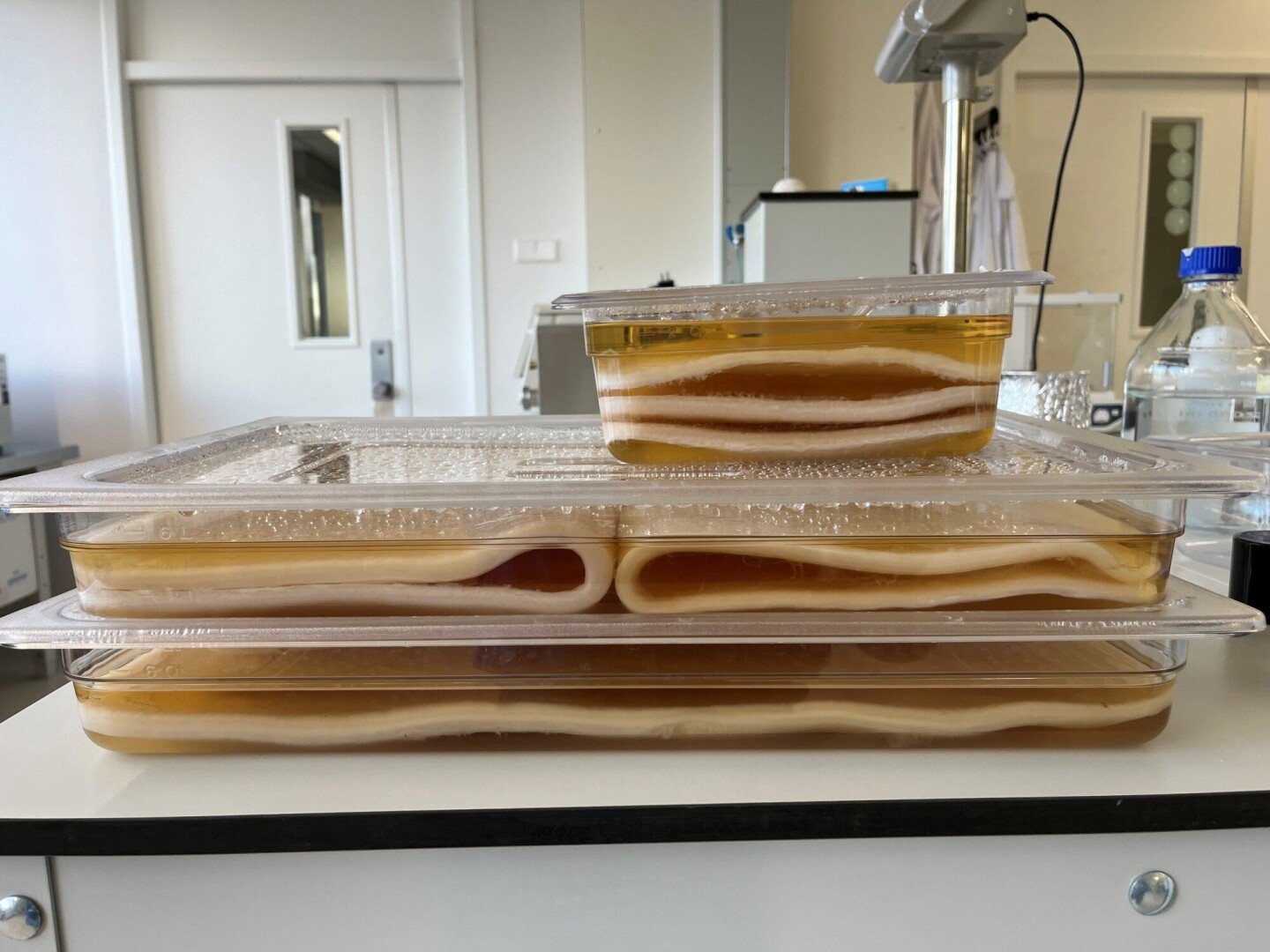
“Foamlab is developing compostable alternatives to polystyrene, also known as Styrofoam,” says co-founder Jeroen van Rotterdam. “We focus on materials that decompose at room temperature and in natural conditions; this is something that many bioplastics are not able to do.” Foamlab’s strength lies in combining science, design and technology to achieve their goals.
The science behind Foamlam
Foamlab’s innovation is based on bacterial nanocellulose, a sustainable material developed at TU Delft. It is produced by bacteria that convert glucose into a polymer and can be adapted for a variety of applications. The same bacteria can therefore produce different materials, from polystyrene to plastic for LEGO. “We focus on controlling both the production process and adapting properties,” says Jeroen.
Foamlab is committed to bringing their innovation to the market. They are therefore now focusing on scaling up and identifying the right applications.
Challenges and opportunities
“Bacterial cellulose has unique properties; it is much stronger than polystyrene and also lighter, making it ideal for specialist industrial applications. But we are also considering applications such as high-volume packaging and lower margins,” continues Jeroen. Scaling up from laboratory scale to production scale is a major challenge. Since last summer, they have been working at Planet B.io, the start-up community and the ecosystem for biotechnology at the Biotech Campus Delft, to imitate a mini-production site and to investigate how they can scale up.
In any case, with a worldwide polystyrene market worth 26 billion euro a year, there is a huge opportunity to make an impact. “We have the opportunity to change the properties of our material by adapting the fermentation process, enabling applications that are not feasible with polystyrene,” explains Jeroen.
Strategy for growth
Jeroen emphasizes the importance of focus: “It’s crucial to focus your efforts on a specific application in a target market,” he says. “If you persevere and stay with a topic long enough, you will be able to do it in the end.” Through Planet B.io, Foamlab has access to advanced lab facilities and support in the form of grants and investor networks. In the long term, the team sees opportunities in a decentralized production model to minimize both transport costs and the ecological footprint.
A vision for impact
“For us, it’s all about impact,” says Jeroen. “If selling our technology ultimately has more impact than producing it ourselves, we will make that choice. But for the time being, we are focusing on introducing our material and achieving a significant reduction in the environmental impact within the polystyrene industry.”
Like to find out more? Visit: www.foamlab.co
photo: Bacterial cellulose the basis for the Foamlab material